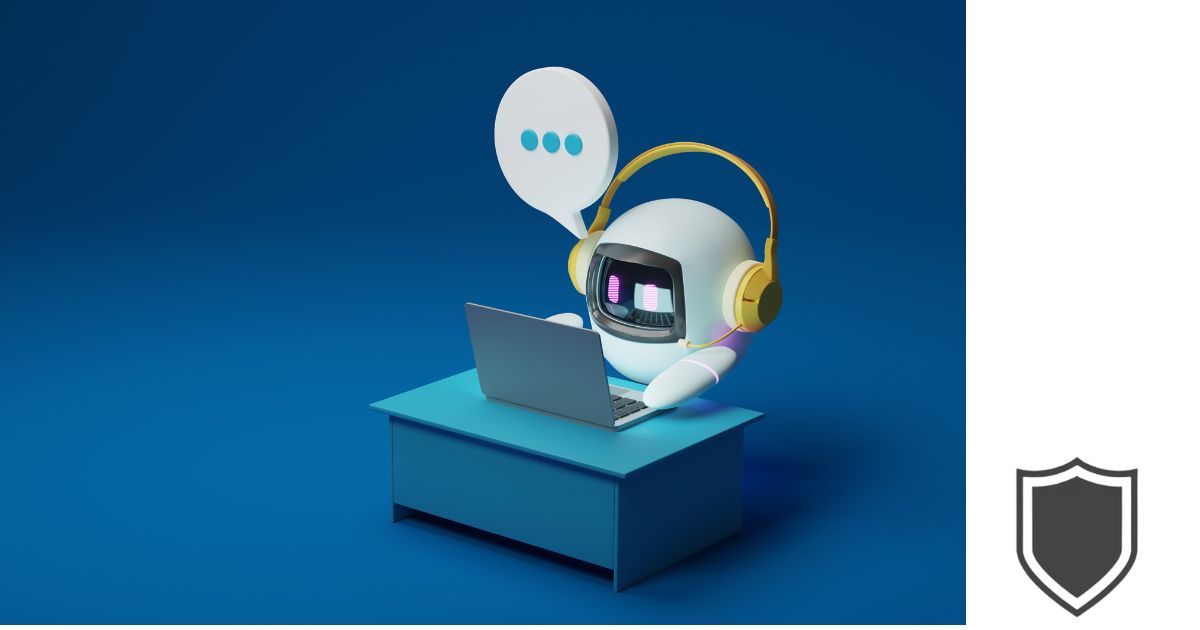Greetings, I’m Dr. Edward Baldwin, navigating through the complex universe where advanced technology intersects with individual privacy. In this session, we’ll delve into AI and Data Privacy. This exploration is not merely a trip; it’s an in-depth examination of the juncture between artificial intelligence (AI) and the critically significant matter of data privacy.
As AI continues to advance at a lightning pace, reshaping everything from healthcare to finance, it brings with it a host of questions and concerns about how it handles our most sensitive information. This guide is about unraveling these complexities, shedding light on how AI is both a boon and a challenge for data privacy.
Whether you’re a tech enthusiast, a concerned citizen, or a professional navigating the AI landscape, understanding the interplay between AI and data privacy is crucial in this digital era. So, let’s buckle up and navigate this minefield, equipped with knowledge and a keen eye for the future.
Table of Contents
The Intersection of AI and Data Privacy

In examining the relationship between AI and data privacy, we uncover the ethical frameworks guiding AI development and the pressing privacy concerns raised by AI technologies.
Principles of AI Ethics and Data Privacy
My focus on AI ethics is rooted in transparency, accountability, and user consent. When creating or deploying AI systems, it’s essential to ensure these principles guide the handling of personal data. Firstly, transparency involves openly communicating the data collection purpose and how the AI will use it. Accountability means developers and organizations must take responsibility for protecting user data and preventing misuse. Lastly, user consent is non-negotiable, as individuals should have the authority to agree or decline before their data is collected or processed.
Key Privacy Concerns in AI
At the core of privacy concerns in AI are data security and the potential for abuse. The security of data is paramount because AI systems often require access to large datasets, which can include sensitive personal information. Unfortunately, this data can become a target for cyber-attacks, leading to breaches of confidentiality.
The potential for misuse also looms large. AI can be employed to surveil or profile individuals without their knowledge, leading to privacy violations. As I reflect on these issues, it’s clear to me that privacy regulations such as the GDPR and CCPA are critical in setting boundaries and standards for AI applications to adhere to. They represent a growing recognition of the need to protect personal information in the age of AI.
Legislation and Regulation

When considering AI, it’s paramount to acknowledge the intertwined relationship with data privacy laws. These legislations govern the use of data within AI systems, ensuring its ethical and lawful application.
GDPR and AI
The General Data Protection Regulation (GDPR) is a pioneering regulation in the EU that has set a high standard for global data privacy. It impacts AI significantly, as it requires transparency around data processing and automated decision-making. Under GDPR, individuals have the right to receive clear information about AI-driven decisions, ensuring that European citizens have a level of control and understanding of AI processes that handle their personal data.
Other Global Data Privacy Laws
Beyond the GDPR, a variety of nations and regions have developed their own data privacy laws:
- California Consumer Privacy Act (CCPA): California’s comprehensive data privacy law offers consumers significant control over their personal information, including the right to know how it’s being used and the option to opt-out of data sales.
- Brazil’s LGPD: Similar to GDPR, the Lei Geral de Proteção de Dados provides Brazilian citizens with various rights concerning their data.
- China’s PIPL: The Personal Information Protection Law requires strict data handling procedures and consent from data subjects, reflecting China’s growing focus on data privacy.
These laws, among others, emphasize the global recognition of the need for data privacy legislation, which directly affects the deployment and management of AI systems.
Regulatory Compliance in AI Systems
To integrate AI within business processes compliantly, I understand that it’s critical to align AI applications with existing data privacy laws. Here’s how it can be done:
- Auditability: Implement logging and monitoring to track AI decision-making processes.
- Fairness and Transparency: AI systems must be designed to provide understandable explanations for their decisions to stakeholders.
- Data Protection: Adopt data minimization and pseudonymization techniques to safeguard individual privacy.
The success of AI systems, therefore, hinges on adhering to these regulatory requirements and building trust with end-users by demonstrating ethical use of their data.
Techniques for Privacy Preservation in AI

In my exploration of privacy in AI, I’ve pinpointed some key techniques that stand out for keeping data secure. Each method has its strengths and addresses different aspects of privacy preservation.
Differential Privacy
Differential Privacy ensures that AI systems analyze large pools of data while guaranteeing individual data points remain anonymous. I use a simple analogy to demonstrate its effectiveness: imagine I add noise to a conversation to mask individual voices while still understanding the overall discussion. This technique injects a small amount of noise into the data, rendering it impossible to identify a person’s information. It allows for insights and patterns to be extracted without compromising the privacy of individuals represented in the data.
Federated Learning
With Federated Learning, AI models are trained across multiple decentralized devices, each holding local data samples. I could liken this to a group project where each person contributes from home, enhancing the collective result without sharing their personal notes. In this approach, the model is sent to the device, gets updated locally, and then only the model improvements, not the data itself, are shared back to the central model. This means sensitive information never leaves its original environment, significantly reducing the risk of data breaches.
Homomorphic Encryption
Homomorphic Encryption is akin to locking documents in a safe but still being able to read them through the safe’s transparent walls. It’s a form of encryption that allows computations to be carried out on ciphertexts, generating an encrypted result that, once decrypted, matches the result of operations performed on the plaintext. Thus, I can perform complex data analysis on encrypted data without ever having to access the raw, sensitive data.
Each of these techniques involves complex mathematical processes and strategic implementations to maintain the delicate balance between leveraging data for AI and protecting individual privacy rights. They are crucial in securing AI systems and cultivating public trust in technology.
Data Protection Strategies

In the era of artificial intelligence, ensuring data privacy is paramount. I’ll walk you through proven strategies such as anonymization, pseudonymization, and data minimization to safeguard personal information.
Data Anonymization and Pseudonymization
To mitigate risks to personal privacy, data anonymization involves altering personal data in such a way that the individual whom the data describes remains unidentifiable. This ensures that privacy persists even if the data is shared. I employ this technique to irreversibly prevent the identification of subjects, often for the purpose of sharing datasets for research or statistics.
On the other hand, pseudonymization is a process that replaces private identifiers with fictitious names or symbols. This allows me to process the data in a form that no longer identifies individuals without additional information, which I keep separately and secure. It’s a reversible process, unlike anonymization, which means that with the right keys, the individuals can be re-identified if necessary for lawful processes.
Data Minimization
A principle I always adhere to is data minimization, which means that I collect only the data that is directly necessary and relevant for the purpose at hand. Here’s how I practice it:
- Collect: I only gather data that is essential for the specified purpose.
- Store: I limit the storage of data both in terms of the amount and the duration.
- Access: I restrict access to the data to only those who must work with it.
By minimizing the data I handle, I significantly reduce the risk of it being misused or compromised. It’s a proactive measure that not only aids in compliance with data protection regulations but also fosters trust with users whose data is being protected.
Impact of AI on Data Privacy

Artificial intelligence (AI) has infused modern technology, influencing how personal data is handled and posing new challenges to data privacy.
Surveillance and Monitoring
Artificial intelligence has significantly advanced capabilities in surveillance and monitoring. With AI, vast amounts of data can be analyzed quickly to identify patterns and behaviors. For example, AI-powered facial recognition systems are used to enhance security measures, but they also raise concerns. These systems collect and process sensitive biometric data, which could be misused if not guarded with stringent data privacy measures.
Automated Decision-Making
Automated decision-making, another facet of AI, involves algorithms making decisions based on data analysis without human intervention. These decisions could range from credit scoring to personalized content recommendations. While efficiency is a clear advantage, there are risks related to accuracy, bias, and transparency. Decisions made by AI can have profound effects on individuals’ lives, and if the decision-making process isn’t clear, it might lead to instances where the affected parties cannot challenge or understand the basis of such decisions.
Challenges and Solutions

In this section, I’ll discuss the nuances of maintaining data privacy while leveraging AI’s capabilities and ensuring fairness across AI systems.
Balancing Data Utility with Privacy
I find there’s a delicate equilibrium to be achieved between maximizing the usefulness of data for AI applications and safeguarding individual privacy. Data Utility involves AI systems harnessing data to improve services like traffic flow management and personalized recommendations. Privacy, on the other hand, necessitates restricting access to sensitive information to prevent misuse. To solve this, I believe in employing techniques like data anonymization and differential privacy, ensuring data utility without compromising personal identities.
- Data Anonymization: Replace identifying information with artificial identifiers or aggregate data to prevent linkage to individuals.
- Differential Privacy: Introduce random noise into data query results, making it improbable to identify personal information while maintaining overall data accuracy.
Addressing Bias and Discrimination
Another crucial challenge lies in eliminating bias and discrimination in AI systems. It’s pivotal that decisions made by AI are fair and do not perpetuate existing prejudices. To address this, I ensure that data sets used for training AI are diverse and representative of the population. Also, I advocate for transparent algorithmic processes and accountability measures to detect and mitigate biases.
- Diverse Data Sets: Curate data from varied sources to reflect different demographics, reducing the risk of biased AI models.
- Algorithmic Audit: Regular checks for biases and implementation of corrective actions if any unfair patterns are found.
The Role of AI in Data Privacy Enforcement

As a technology enthusiast, I find Artificial Intelligence (AI) can play a critical role in the enforcement of data privacy. AI systems are becoming increasingly integral to monitoring and maintaining privacy standards across vast digital ecosystems. With AI’s capabilities, I can analyze and process large data sets swiftly, which is essential for identifying potential privacy breaches.
Automated Compliance Checks:
- AI swiftly compares data handling practices against privacy regulations such as GDPR.
- It identifies non-compliance and suggests corrective measures.
Real-Time Monitoring:
- AI tools actively monitor data transactions for unusual activities that may indicate breaches.
- Anomalies are flagged instantly, facilitating speedy response to potential threats.
These are just snippets of how AI contributes to enforcing data privacy. With AI’s continual advancements, I’m optimistic about more robust and proactive privacy enforcement in the digital realm.
Future Perspectives on AI and Data Privacy

With technology continually progressing, my view on AI and data privacy is one of cautious optimism. As AI systems evolve, they become more deeply intertwined with our personal data. I believe a pivotal aspect of future development will center around creating AI that can function effectively while respecting user privacy.
- Transparency: AI systems should be transparent about the data they collect and how it will be used. I foresee future AI solutions offering users more control over their data, along with clearer explanations of data handling procedures.
- Regulation: Regulations like GDPR and CCPA have set precedents, but AI’s rapid advancement will necessitate updated laws. I expect future legal frameworks to specifically address AI-related privacy concerns with greater precision.
- Privacy-Enhancing Technologies (PETs): Investment in PETs will likely surge to ensure that AI can analyze data without compromising individual privacy. Techniques such as federated learning and differential privacy could become standard practices for handling sensitive information in AI systems.
- Education: I predict increased efforts to educate the public about AI and privacy. Knowledgeable users can make informed choices and demand better privacy standards.
| Year | Focus |
|---|---|
| Short-term | Increase in consumer-aware AI applications. |
| Mid-term | Implementation of more robust AI-specific privacy regulations. |
| Long-term | AI systems with built-in privacy features becoming ubiquitous. |
In my interactions with AI technology, ensuring that privacy is not an afterthought but a central feature of AI development must be a priority. The balance between leveraging AI for societal benefits and protecting individuals’ data will shape the technology’s trajectory and societal acceptance.
The Final Word
And there we have it – a comprehensive exploration of the dynamic and sometimes precarious world of AI and data privacy. In “AI and Data Privacy: Navigating the Minefield of the Modern Age,” we’ve peeled back the layers of how artificial intelligence is reshaping our understanding and handling of personal data.
This journey has highlighted that the intersection of AI and data privacy is not just a technical challenge, but a significant ethical one too. As we forge ahead in this AI-driven era, the key is to strike a balance – leveraging the immense potential of AI while fiercely guarding the sanctity of individual privacy.
So, as we continue to witness the evolution of AI, let’s stay informed, remain vigilant, and actively participate in shaping a future where technology and privacy can coexist harmoniously. Remember, in the world of AI and data privacy, we are all navigators, charting the course through this modern minefield. Stay curious, stay cautious, and above all, stay engaged.
AI and Data Privacy FAQs

In this section, I address some of the most common inquiries regarding the intersection of AI and data privacy, focusing on protection, security mechanisms, risks, and legal considerations.
How does artificial intelligence impact personal data protection?
AI systems often require vast amounts of data to learn and make decisions. While these systems can enhance personalization and efficiency, they also raise significant concerns about the storage, usage, and potential mishandling of personal data.
What mechanisms are in place to ensure data privacy in AI-driven applications?
Developers typically implement a range of data protection mechanisms, including encryption, anonymization, and strict access controls. Additionally, AI applications may be designed with privacy-preserving techniques such as differential privacy, which adds ‘noise’ to the data to prevent individual identification.
In what ways can AI contribute to enhancing data security?
AI can proactively detect and respond to security threats by identifying unusual patterns that may indicate a data breach. It also helps in automating the encryption process and managing complex authentication protocols to safeguard sensitive information.
What are the potential risks of generative AI with regards to personal privacy?
Generative AI models, like those creating text or images, have the potential to misuse personal data if not properly regulated. They can inadvertently reveal sensitive information or be exploited to create deepfakes that erode trust and privacy.
How are healthcare organizations addressing privacy concerns when utilizing AI?
Healthcare organizations are particularly diligent with AI, implementing robust safeguards such as HIPAA compliance in the United States to protect patient data. They conduct rigorous risk assessments and employ AI solutions that are transparent and explainable in their handling of health data.
What legal frameworks govern the use of AI in relation to data privacy?
Legal frameworks such as the General Data Protection Regulation (GDPR) in Europe and various federal and state laws in the United States regulate the use of AI. They mandate clear consent for data collection, the right to data access, and the right to be forgotten, ensuring accountability in AI operations.
- Amazon Email Phishing: How to Identify and Avoid Scams - May 16, 2024
- Malwarebytes vs McAfee: Decoding the Ultimate Antivirus Battle - May 16, 2024
- Best Antivirus for Windows 10: Expert Recommendations for 2023 - May 15, 2024









